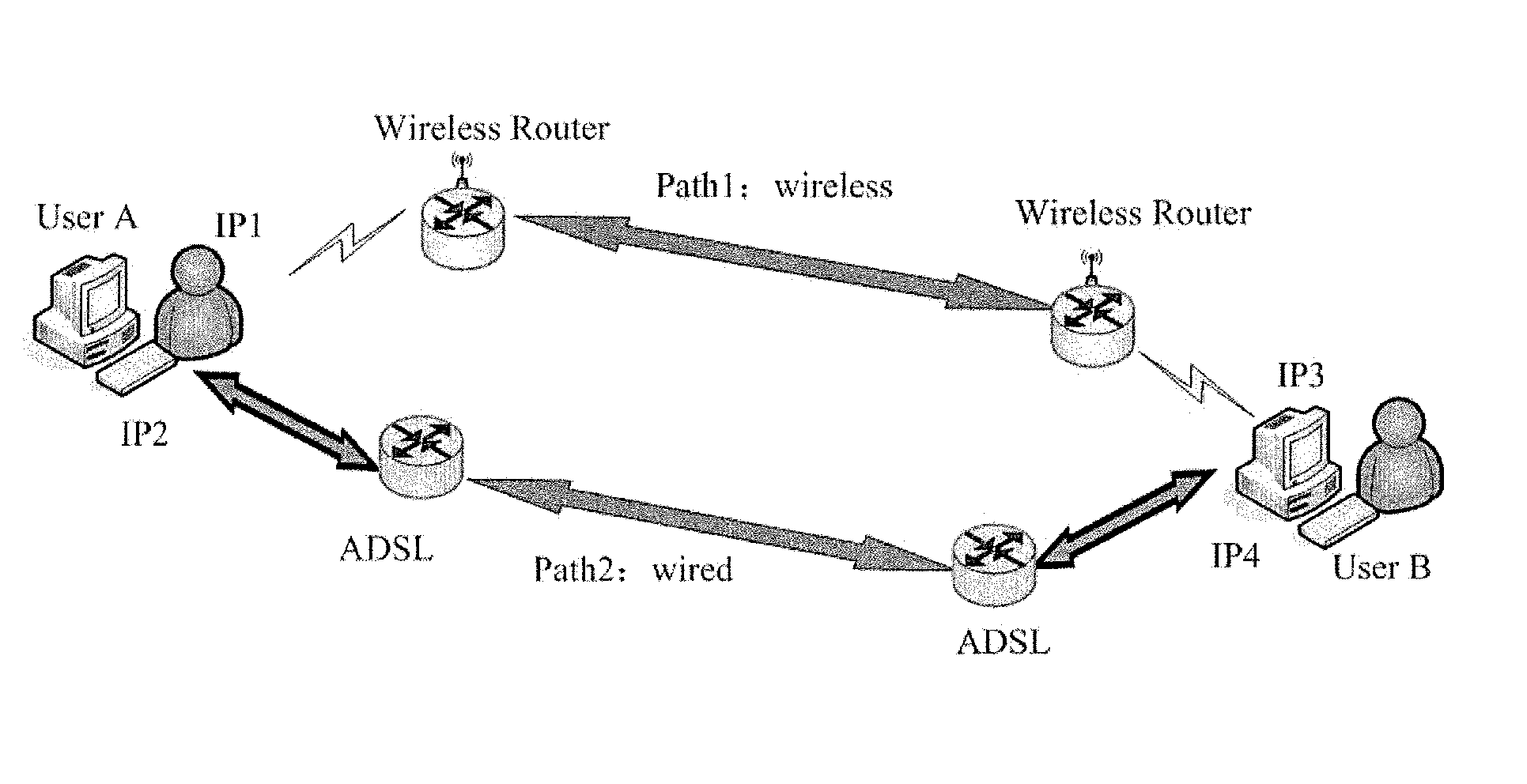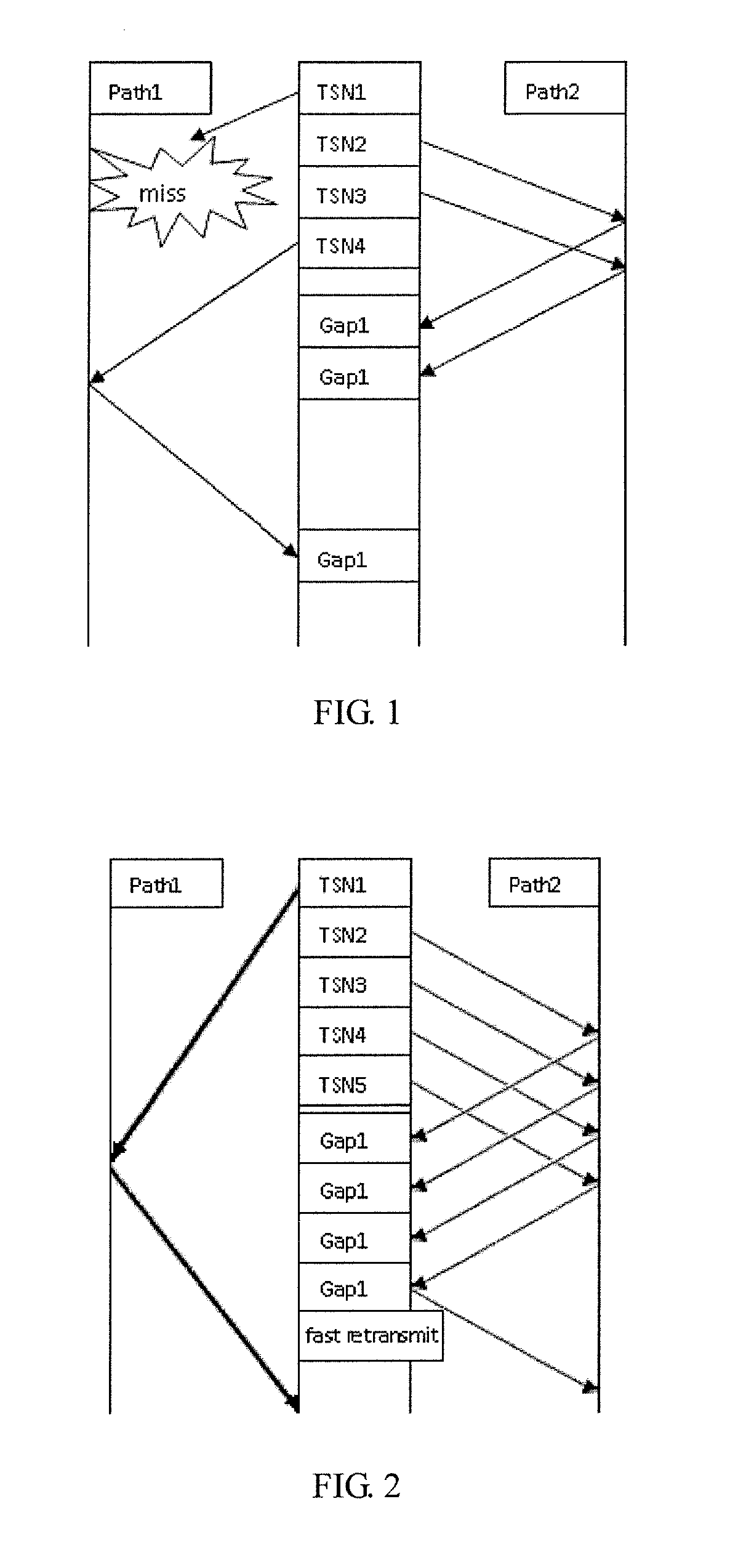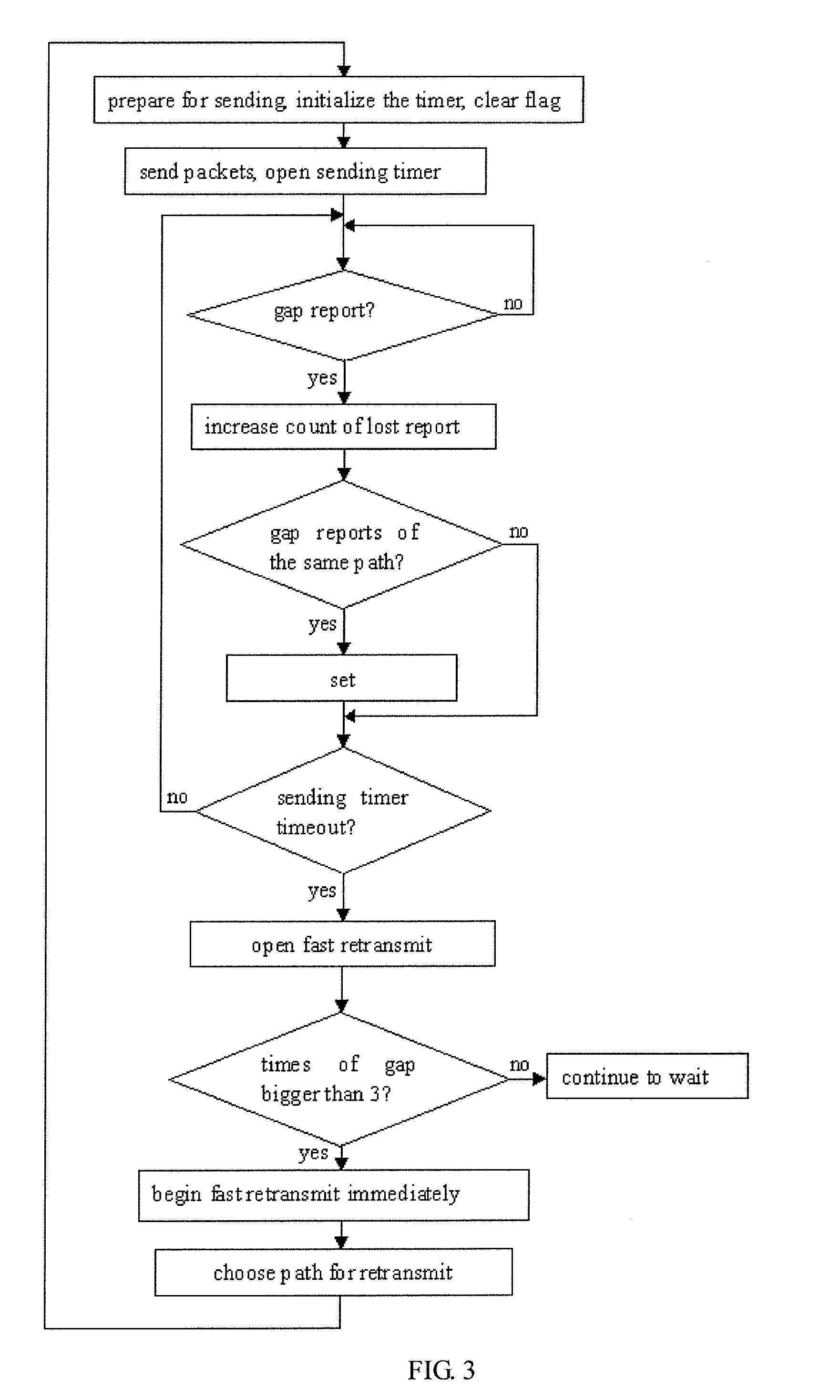Method of concurrent multipath transfer based on relational paths
a multipath transfer and relational path technology, applied in the field of computer network, can solve the problems of failure of the upper layer of the other packet to be handed in, mutual restriction among multiple paths, and out of order received tsn in the receiver
- Summary
- Abstract
- Description
- Claims
- Application Information
AI Technical Summary
Benefits of technology
Problems solved by technology
Method used
Image
Examples
Embodiment Construction
[0015]According to this invention, for the problem of packets disorder between paths, paths are allowed to point out lost packet mutually and generate one or more gap reports.
[0016]For example, in FIG. 1, TSN1 is lost in path1, TSN2 and TSN3, which are sent in path2, can also point out TSN1 is a lost packet though a gap report.
[0017]It is one of embodiments that when receiving a Selective Acknowledgement (SACK) with one gap report, it is to:[0018](1) find out the lost TSN number Tm which is pointed out by the gap report; and[0019](2) increase the lost report counter of Tm.
[0020]After allowing paths to point out lost packets mutually, there will be plenty of gap reports because of the performance difference between paths. But many of the gap reports are caused by the temporary packet lacking resulted from the different delay between paths, instead of losing.
[0021]When the difference between path delays is large enough, it may lead to unnecessary fast retransmit. FIG. 2 is an example ...
PUM
 Login to View More
Login to View More Abstract
Description
Claims
Application Information
 Login to View More
Login to View More - R&D
- Intellectual Property
- Life Sciences
- Materials
- Tech Scout
- Unparalleled Data Quality
- Higher Quality Content
- 60% Fewer Hallucinations
Browse by: Latest US Patents, China's latest patents, Technical Efficacy Thesaurus, Application Domain, Technology Topic, Popular Technical Reports.
© 2025 PatSnap. All rights reserved.Legal|Privacy policy|Modern Slavery Act Transparency Statement|Sitemap|About US| Contact US: help@patsnap.com



